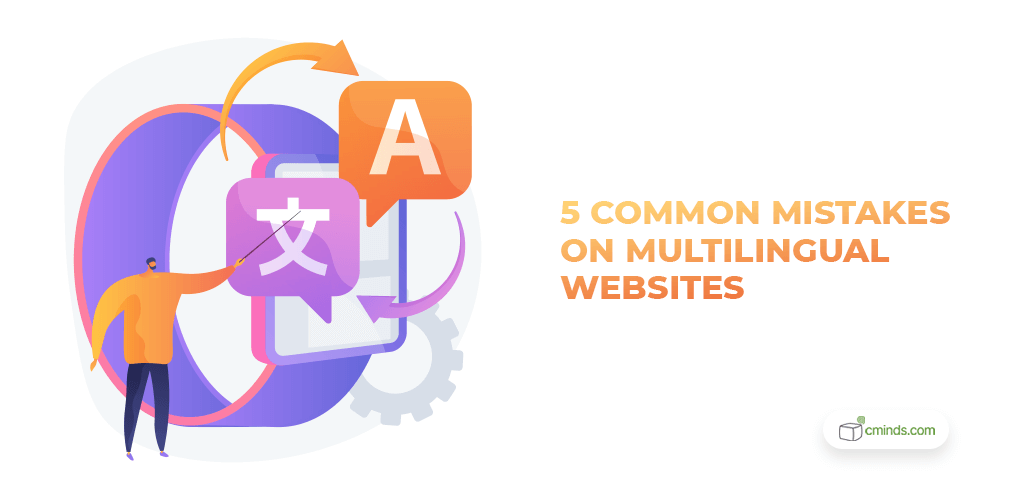In today’s global world, it’s a good idea to have a multilingual website. However, building a multilingual site brings its own unique challenges.

There are many things to consider when building a multilingual website. These include deciding which languages your business actually needs, how you will carry out the translation, having effective SEO, using localization, and much more.
April 2024 Offer – For a Limited Time Only:
Get WordPress Tooltip Glossary Plugin for 15% off! Don’t miss out!
Mistakes to Avoid When Building a Multilingual Website

However, like with any web design and development project, there are pitfalls to avoid when translating your site.
Below are five common mistakes to avoid when building a multilingual website.
1. Relying on Automated Translation
We’re very lucky to live in an age where many tasks can be fully automated. Translation is not one of them.
Tools such as Google Translate are helpful, but they have a long way to go before translation is 100% accurate.
Until automated translation improves, it’s best to have your translation project carried out by real-life humans. Humans understand the nuances of language, including grammar and syntax.
While it may be more expensive, employing people to carry out your translation will ensure it’s more accurate – which will ultimately save you time and money in the long run.
2. Forgetting About SEO

The ultimate goal of a multilingual website is to bring in more traffic and gain more satisfied customers. This requires effective SEO – search engine optimization.
To make your project a success, you need a multilingual SEO strategy. This includes translated URLs, researching long tail keywords in different languages, translating meta tags, alt tags and descriptions, and even using plugins with multilingual SEO options. These tactics ensures that everything from written content to images is fully optimized for each language.
Remember: It’s a good idea to make these SEO changes while translating your website, instead of going back after it’s completed.
3. Failing to Research Needed Languages
There are thousands of languages spoken around the world and translation projects take time and money, so it’s important to pick languages that will be most useful for your business.
Studies show that consumers prefer to shop in their native languages. So, for example, if your business is located in the States but you want to break into to the Chinese market, it may be a good move to translate your site into Mandarin.
The best way to know which languages you need is to see where your traffic comes from. Monitor the countries where people are viewing your content most, and this should give you a picture of the best languages for your business.
4. Not Using Localization Techniques

Localization is the process of tailoring content to particular locales. If you’re serious about targeting a particular place, it’s important that your translation account for any dialects, slang terms, or variation in language.
A good example of this is English vs. American English. While English is the dominant language in both the UK and the US, you’ll find a lot of differences between the two languages.
Whether it’s different ways of saying the same thing (pavement vs. sidewalk or basket vs. shopping cart), spellings (colour vs. color or favourite vs. favorite) or even dates (day/month/year vs. month/day/year). These little things can make a big difference to customers.
For eCommerce websites, good localization also includes providing things like currency switchers, free shipping options globally, marketing or ad restrictions in certain countries, and more.
Localization ensures that your customers are getting the best possible experience from your website.
5. Keeping Translation Hidden

To get the most benefit out of your translation project, it’s important to clearly signpost that your website is available in multiple languages.
It’s a good idea to have a translation button near the top of each page, so that your visitors can easily switch to their preferred language. Any language added to your website should also include support options if those customers have questions.
Conclusion
Depending on your needs, a multilingual website can be a great idea. However, it’s important to avoid these common mistakes. They’re likely to waste time and money without bringing any benefit to your website.
If you want to bring translation to your site, but don’t have the time and money for a full scale translation project, consider our Tooltip Glossary plugin. It’s a great way to translate key words and phrases, providing them in a helpful tooltip pop-up.


